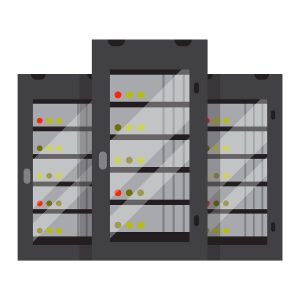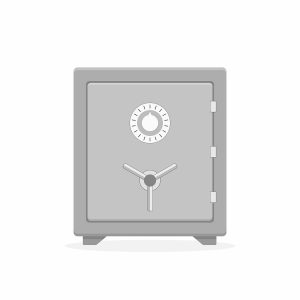
Data backup is an essential process to ensure business stability and security. Any data that isn’t backed up regularly risks being lost, stolen, or accidentally deleted. Below learn about the different strategies and techniques for data backup so you can keep your data safe.
Video Transcription
Backup Types: Rule of Three
The risk of losing days, months, or years of information makes backups an essential insurance policy for protecting important data.
To cover all your backup bases, follow a 3-2-1 backup plan:
- Keep 3 copies of all your data
- Backup digital files to at least 2 formats
- Keep 1 physical copy offsite in case of fire or flood
4 Types of Data Backup
| Backup Type | Data Backed Up | Backup Time | Restore Time | Storage Space |
|---|---|---|---|---|
| FULL BACKUP | All Data | Slowest | Fast | Large |
| INCREMENTAL BACKUP | New/Modified Files Only | Fast | Moderate | Small |
| DIFFERENTIAL BACKUP | All Data Since Last Full Backup | Moderate | Fast | Moderate |
| MIRROR BACKUP | New/Modified Files Only | Fastest | Fastest | Largest |
Full Data Backup
Full data backup is when you make a complete copy of all the information in your database, including all files and folders.
One of the greatest advantages of fill data backups is the ability to restore some or all of your data quickly, but it’s important to note that doing the full backup itself can take a large amount of time.
Incremental Data Backup
Incremental data backup only backs up new or modified files from the point at which the last full or differential backup has occurred.
The advantage of incremental data backup is that unlike full data backups, incremental is much faster and takes much less storage space than a full backup.
Differential Data Backup
Differential data backup only stores all files that have changed since the last full backup.
 Differential takes a moderate amount of time for backups and has quick restore times, but as more new files are added the needed storage space can become larger than the original backup.
Differential takes a moderate amount of time for backups and has quick restore times, but as more new files are added the needed storage space can become larger than the original backup.
Mirror Data Backup
Mirror data backups are similar to full backups except that they can be password protected and files aren’t zip compressed.
The greatest advantage of mirror backups is that they provide the fastest backup and data restoration time, however they do take up the most storage space on servers.
Method #1: Backup Data to the Cloud
Cloud storage is a convenient option that offers several advantages for backing up data:
- Providers use multiple storage servers in multiple locations, creating an addition backup for what already been backed up to the cloud
- Cloud storage uses encryption systems to secure data
- Information is accessible anywhere using an internet connection
- Improves space efficiency since files are backed up and stored externally
Method #2: DMS Systems and Client-Server Backups
 Client-server backups allow the information and records from all company computers to be backed up to a central server.
Client-server backups allow the information and records from all company computers to be backed up to a central server.
The client computers can be controlled by the server, allowing a single individual responsible for the server to manage DMS backups company-wide.
As a result, client-server systems create both an effective and simple process for backups and remove the need to teach employees to backup themselves.
Backup Single Devices with External Hard Drives
For a smaller company or individuals with personal work files, an alternative to large-scale client-server backups is using external hard drives for backups.
As the technology advances, storage capacity is growing while cost is going down—now allowing some computers to be fully backed up to a single drive.
Method #3: Offsite Backup Storage
Besides a fast fallback for restoring backed up information, having a physical copy stored elsewhere is a safety net for natural disaster.
Offsite storage facilities are climate-controlled and equipped with fire-suppressant systems in order to protect any hard-copy records or hard drive backups from environmental hazards while stored.
Ongoing Offsite Backups with Tape Rotation and Vaulting
 For those using tape backups as a cheap storage option with large storage capacity, offsite vaulting facilities also use climate control systems to regulate temperature and humidity.
For those using tape backups as a cheap storage option with large storage capacity, offsite vaulting facilities also use climate control systems to regulate temperature and humidity.
Besides being able to store physical backups offsite, backup tape rotation at vaulting facilities use a first in first out (FIFO) tape rotation scheme for ongoing backups.
The oldest tapes are overwritten each time new data is backed up—providing regular offsite backups with the ability to recycle resources instead of buying more storage space.
Need to Tighten Up Your Backup Policies and Plans?
Record Nations helps businesses across the country find data backup solutions that work. Whether you are a small business just starting out or you have been serving your community for decades, we will help you backup your necessary files.
Call us at (866) 385-3706 or fill out the form on the right and our records professionals will help you find the best data backup solution for your needs.












